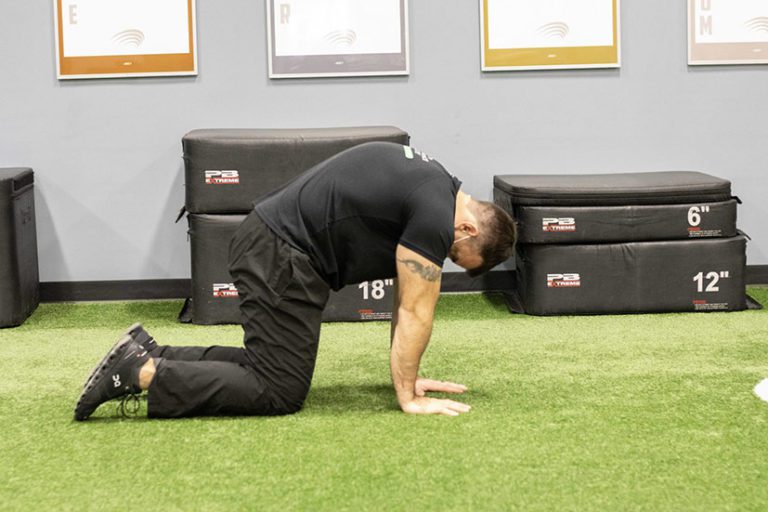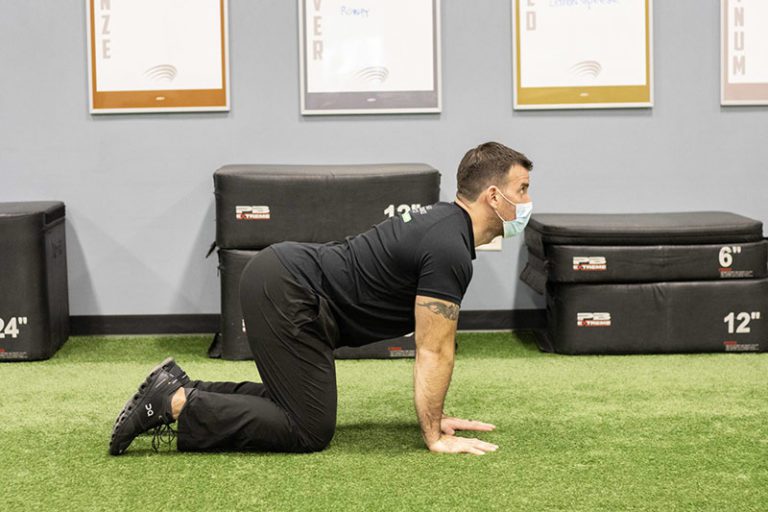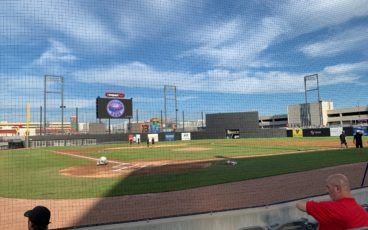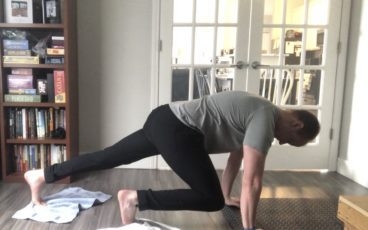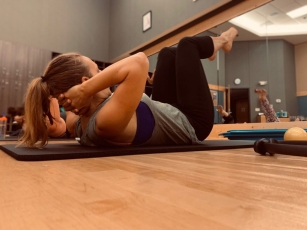Q&A with Kenny Blanchard, Assistant Manager at the IBJI Health Performance Institute (HPI) in Highland Park
What Happens to Our Bodies as We Age and How Can Stretching Exercises Help?
Kenny: When you get older, the fascia, the connective tissue that makes up your muscle, starts to lose its pliability. Think of a basketball that has lost air. It doesn’t have enough bounce. Actually the fascia ends up shortening, so you will lose your range of motion.
There are a bunch of different things you can do with stretching exercises to help that. You can run, jump and do plyometrics, but stretching exercises are one of the easiest things that elderly people can do. It’s a lot easier on the joints and doesn’t strain or create too much effort through the body.
Are Stretching Exercises Good for Rehab Patients?
Kenny: Yes, I honestly would say that 50 percent of our population has come through our doctors and rehab. Patients are coming to us injured or in rehab.
We have patients who are coming off of ACL injuries and elderly coming in with low back pain, shoulder repairs, knee replacements, and an assortment of injuries.
How Can Patients Address Stiffness from Cold Weather?
Kenny: Generally, tightness and stiffness rears its head more during the winter months. Those systemic changes can quickly reverse themselves once a person warms up with stretching exercises.
You wouldn’t want to stretch in 30 degree weather, for example. The outcome wouldn’t be great.
If a person is in the gym, though, when their body temperature is elevated, that’s the best time for stretching exercises.
How Can Runners Safely Do Stretching Exercises in the Winter?
Kenny: For runners, if you have the space, you should do an active warmup inside along the lines of core work, muscle activation, and dynamic stretching exercises. Getting your heart rate elevated for two to three minutes before heading out into the cold. That would be my best advice.
After a run, when your body is completely warmed up after a workout, that’s like playdoh and that’s when you are going to create the most physiological changes.
There is some benefit in doing stretching exercises before, but you’re going to get more benefits of lengthening the fascia after the workout. It will last longer than prior to you starting the workout.
How Long Should You Hold a Stretching Exercise?
Kenny: One of the biggest common misconceptions is that in gym class, you would be taught to stretch and reach your toes and count to 10, but there is no physiological change in seconds.
You have to hold stretches for about a minute and 30 seconds. It may feel good, but you aren’t actually lengthening any muscles unless you’re going to do it for 90 seconds. You may get bored for sitting that long, but that’s the amount of time it takes.
Hamstring stretches are one of the biggest things people complain about when it comes to stretching exercises. You have to do the static stretches consistently and over an extended period of time to see change.
What Stretching Exercises Do You Recommend People Do in the Winter Months?
Kenny: Below are the 5 stretching exercises that I recommend:
Hamstring Stretching Exercise
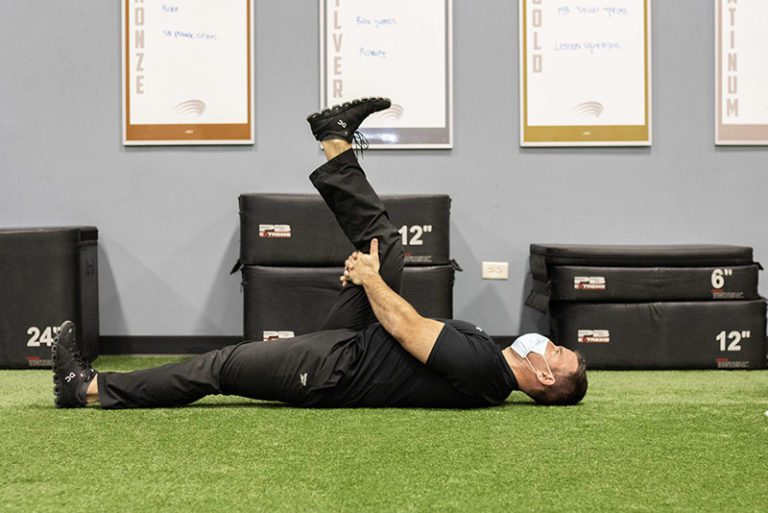
A hamstring stretch is one of the stretching exercises Kenny recommends.
Hip Flexor Stretching Exercise
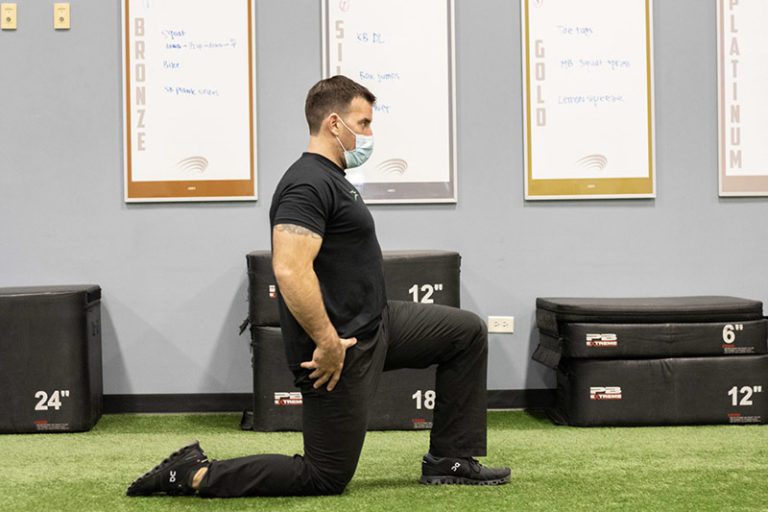
Kenny recommends doing hip flexor stretches as part of a winter stretching exercises routine.
Cat/Cow Spinal Mobility Stretching Exercise
Foam Roller Pec Stretching Exercise
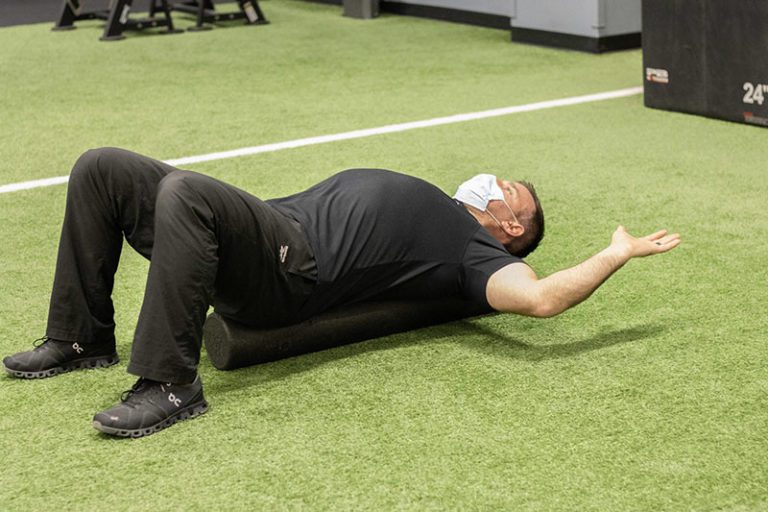
If you have a foam roller, you can add pec stretches to your winter stretching exercises routine.
T-Spine Open Book Stretching Exercise
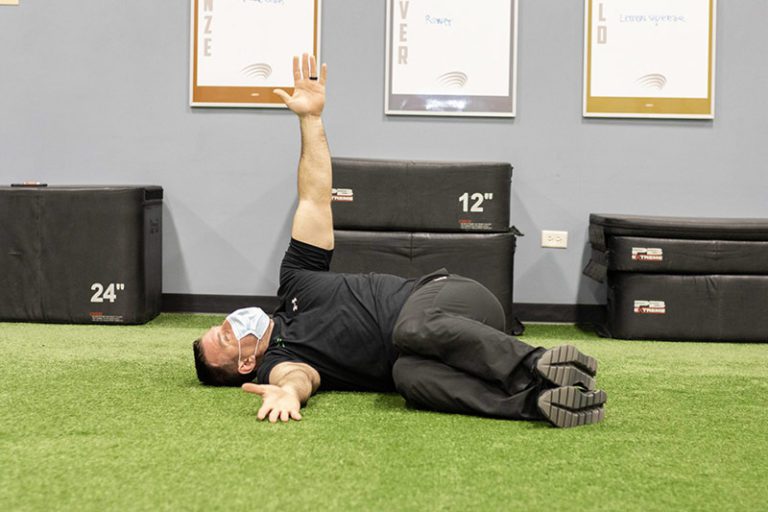
Open book stretch is a great stretching exercise.
What Causes Tight Muscles?
Kenny: One is inactivity or just being sedentary. Your body is like playdoh. If you don’t work it, it will stay inactive, taut, and not really pliable.
I also see tight muscles a lot from people who are coming off of back or knee injuries. Tightness can be a sign of guarding. Maybe you pulled your back two years ago and the muscles around your spine are guarding.
That means they are getting tight and shortening in length to make sure you don’t hurt yourself further. Those are the two biggest reasons why I see tightness. Stretching exercises can help.
What Do You Do to Help Patients with Tight Muscles?
Kenny: One example would be a person with an ACL injury who may have super tight quads. After the healing process is finished, sometimes tightness doesn’t dissipate, so we have to try to loosen that over time. We need the muscles to relax.
I work to try to re-educate proper movement with stretching exercises. There are five or six basic movement patterns: hinging at your hips, squatting, lunges, press and pulling, and working through the range of motion while also working on strengthening.
What Are Some Common Areas of the Body That Experience Muscle Tightness?
Kenny: The biggest areas people complain about are low back, hamstrings, glutes, and pecs. Your sciatic nerve runs down your lower back and into your glute and all the way down to your foot. The compression of that nerve can give numbness and pain.
It can be hard to find out where it’s getting compressed. It’s a guess and check area. Stretching exercises make it feel better, so you can try a butt stretch, a hamstring stretch, or a calf stretch to see where you’re getting relief.
Why Is It Bad to Have Tight Muscles?
Kenny: A tight muscle is considered a weak and an inhibited muscle. It’s accustomed to a limited range of motion so you’re not utilizing the entire range of motion. Neuromuscular re-educating a person is important so that they can get to the full length that they can use.
A person who is squatting, for example, can start with three feet off the ground and then work down to a small stool. I call it re-education of the muscle fibers. Proper strength training is important in addition to these general static stretching exercises.
Can You Describe Some Stretching Exercises That Involve Strength Training?
Kenny: I can teach someone how to do a Romanian deadlift, or RDL. You are hinging from your hips, pushing your butt back to a wall as a target, and as you are lowering yourself and getting that range of motion through your hips, with the weight, you’re getting an external stimulus which is load, and when you’re moving, you’re stretching that muscle while you’re doing it.
I call it lengthening and strengthening. If you’re doing it properly, you want to disperse your weight as you’re bending down.
You could do the same thing with a push-up. There is a stretching exercise that is called a doorway stretch. You’re in a doorway and you put your hands up on either side of the doorway and it opens up your chest. It’s like an elevated push-up. We're strengthening and lengthening in the same movement.
If you break down what rehab is, a patient is going to get therapy on a shoulder, for example. The physical therapist will probably do some manual therapy and apply some passive and active stretching exercises on the person to increase the range of motion.
How Often Should You Perform Stretching Exercises?
Kenny: It depends on what the person’s goals are. The more you do stretching exercises, the better benefit you have. If a person’s goal is to touch the ground, they can do stretching exercises every day for two or three weeks and maybe they’ll hit their goal.
I would say spend two to four times a week on specific muscle areas to reach a specific goal like touching your toes and then two times a week to maintain.
What Apparatuses Can Be Used With Stretching Exercises?
Kenny: Foam rollers and massage guns are really popular these days. The effects of a foam roller, rolling out your low back or your hamstrings, will only last for 15 minutes. It’s a good modality to use to get increased range of motion, but it will not last too long, studies have shown.
How Can HPI Help?
Kenny: We offer free assessments of 30 minutes to sit down with you and talk about your goals, your injury history, and a movement assessment to get an expert opinion of where you need to go. There are a decent amount of people who come in who are injured.
We always do a two-week free trial of our adult strength-training classes. One is a high intensity interval training class (HIIT). We do a lot of stretching exercises.
We have a lot of our people who are coming from the therapy side who can hop into that. We can individualize the program to fit your needs. Patients work with trainers in small groups. It’s individualized personal training in a group setting.
Why Should Patients Choose HPI at IBJI?
The good thing about IBJI is that we have a huge team. You’re in a facility, especially in Highland Park, where you have doctors, physical therapists, athletic trainers and personal trainers. We have resources here to help.
Learn More
HPI has three locations: Highland Park, Mount Prospect and Morton Grove. Learn more about the services offered at hpi-ibji.com or schedule your free consultation to move, feel, and perform better.

